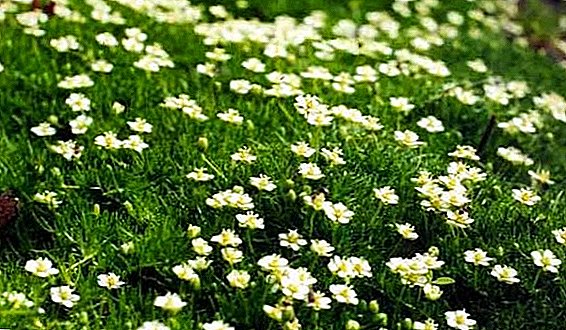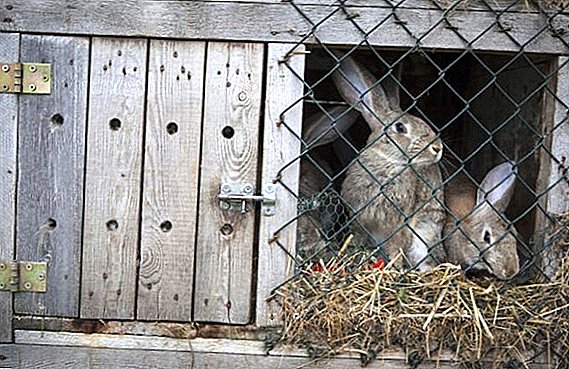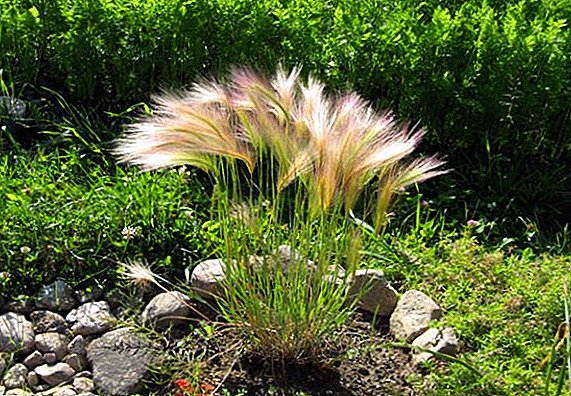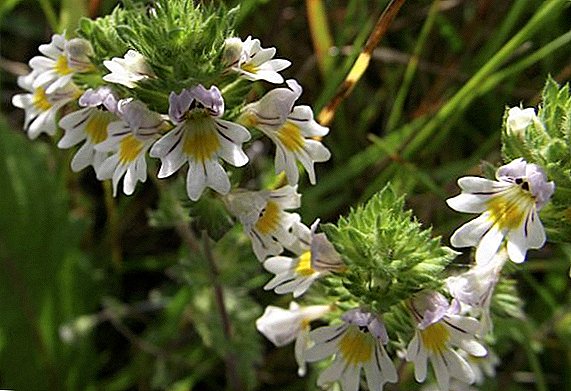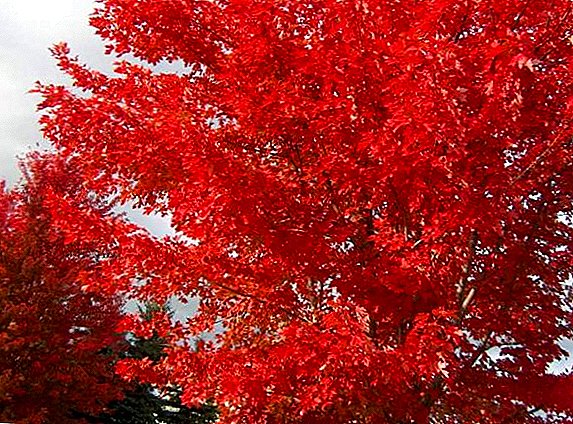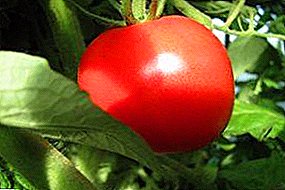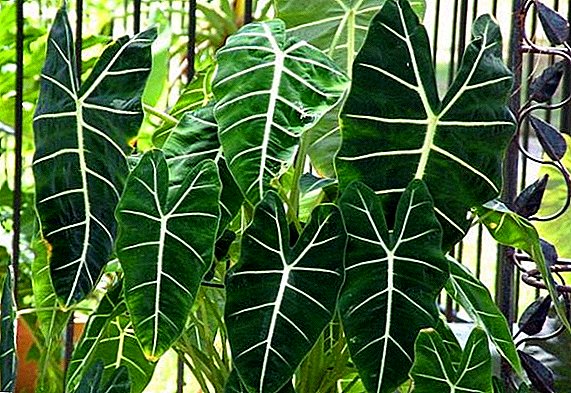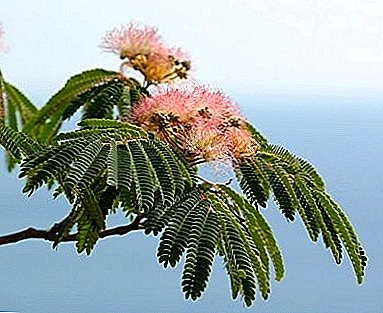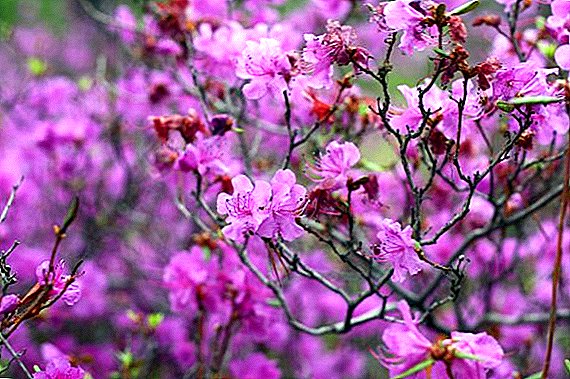 Probably not among the marsh plants more fragrant than wild rosemary It is an evergreen shrub, attracting the attention of lush flowering and a pronounced heavy, resinous aroma. With proper treatment, a wild rosemary has not only a decorative meaning - it benefits the garden and has a healing, antiseptic, cleansing effect on the human body. In addition, the plant is fairly easy to grow without much effort.
Probably not among the marsh plants more fragrant than wild rosemary It is an evergreen shrub, attracting the attention of lush flowering and a pronounced heavy, resinous aroma. With proper treatment, a wild rosemary has not only a decorative meaning - it benefits the garden and has a healing, antiseptic, cleansing effect on the human body. In addition, the plant is fairly easy to grow without much effort.
Did you know? Rosemary belongs to the Heather family, its name comes from the old Russian verb “bangulit” - “to poison”, and the adjective “bagul” derived from it means “poisonous”, “intoxicating”, “tart”. People called it so because of the pronounced, strong aroma, which can be suffocating if it is inhaled too much.
 Ledumberry has a scientific name - Ledum (Latin Lédum), which came from the Greek "ledon" - so the inhabitants of ancient Greece called incense. There is still no unanimous opinion about his family: Western botanists identify wild rosemary and rhododendron and refer both plants to the same genus - Rhododendron; and in Russian sources, wild rosemary is considered a separate genus. However, each name can be considered correct.
Ledumberry has a scientific name - Ledum (Latin Lédum), which came from the Greek "ledon" - so the inhabitants of ancient Greece called incense. There is still no unanimous opinion about his family: Western botanists identify wild rosemary and rhododendron and refer both plants to the same genus - Rhododendron; and in Russian sources, wild rosemary is considered a separate genus. However, each name can be considered correct.
A characteristic feature of the wild rosemary is that during flowering, it releases substances that in large doses can have an adverse effect on humans. The source of the pungent smell is the essential oils, which contain ice - poison, which affects the nervous system. The aroma leads to headache and dizziness, so it is not recommended to bring rosemary flowers in the house. Honey collected from flowers ("drunk" honey), which cannot be consumed without boiling, is also poisonous.
Types of wild rosemary
The Evergreen Ledum plant contains up to 10 species, of which the Ledum roseum is the most common.
Ledum rosemary
 It is a cold-resistant shrub that is rarely used because it is poisonous. It grows in swamps, in swamped coniferous forests, and also in peatlands, especially in Western and Eastern Siberia, Southern and Northern Europe, Northeast China, Northern Mongolia, and North America. This shrub usually grows up to 60 cm in height, but there are plants that reach 120 cm. The wild rosemary rosemary blooms in May and July, then numerous white, delicate flowers bloom on the tips of the shoots that form inflorescences.
It is a cold-resistant shrub that is rarely used because it is poisonous. It grows in swamps, in swamped coniferous forests, and also in peatlands, especially in Western and Eastern Siberia, Southern and Northern Europe, Northeast China, Northern Mongolia, and North America. This shrub usually grows up to 60 cm in height, but there are plants that reach 120 cm. The wild rosemary rosemary blooms in May and July, then numerous white, delicate flowers bloom on the tips of the shoots that form inflorescences.
The fruit of this plant is an oval pyatignezdnaya multi-seed box. The lush, spectacular flowering of the marsh wild rosemary draws attention to the shrub like an ornamental plant, but growing it in the garden is not too common. Cultivation of this species is simple, with proper agricultural technology, he lives in heather gardens for a long time.
Did you know? In the people the wild rosemary marsh is called klopovaya grass, the marsh hemlock, oregano, puzzles, the marshy stupor, the goddess, the bagunicus, the bogun, the marsh kanabra, forest rosemary.
Bagulnik Greenland
This species is common in the Arctic zone everywhere. In Europe, the Greenland wild rosemary reaches to the Alps; in North America it reaches the north of Ohio, New Jersey, Oregon, and Pennsylvania. It grows mainly on peat bogs or wet coasts, and sometimes on Alpine rocky slopes. Evergreen shrub reaches a height of 50 cm - 1 m (sometimes up to 2 m). The leaves of the plant are wrinkled from above, covered with white or brownish-red hairs from the bottom, and wavy at the edges. The plant has a high cold resistance.
Bagulik Greenland blooms from mid-June until the second half of July. Small white flowers, as well as in the wild rosemary tea, form spherical inflorescences and have a bright aroma. In gardening, wild rosemary wild rosemary is rare, mainly in the collections of botanical gardens. The seeds of the plant ripen by the end of September.
Did you know? Greenland Ledumberry has an interesting variety of Compact (Compacta) - an evergreen shrub up to 45 cm in height. It has a significant decorative value due to the abundant flowering of small cream flowers, collected in semicircular inflorescences.
Ledum rosewood
 Habitat of large-leaved wild rose is the Far East and Eastern Siberia, the Korean Peninsula, Japan. It grows in the undergrowth of mountain coniferous forests, as well as on sphagnum bogs, on the edges of stone placers among heather bushes. It reaches a height of 50 to 130 cm. It has abundant color, blooms from the second decade of May to the beginning of June. The seeds of wild rosemary of ripberry ripen in late August - early September.
Habitat of large-leaved wild rose is the Far East and Eastern Siberia, the Korean Peninsula, Japan. It grows in the undergrowth of mountain coniferous forests, as well as on sphagnum bogs, on the edges of stone placers among heather bushes. It reaches a height of 50 to 130 cm. It has abundant color, blooms from the second decade of May to the beginning of June. The seeds of wild rosemary of ripberry ripen in late August - early September.
Ledum leaves creeping
Ledum leaves creeping, or wild roseum prostrate grows in Siberia, the Far East: Kamchatka, Chukotka, Sakhalin, Primorye; in the north of North America, on the island of Greenland. Low shrub, reaches 20 - 30 cm in height, which makes it the lowest-growing species. It grows in deciduous woodlands, on mossy marshes, in bushy tundra, on high-mountain sphagnum marshes, on sandy hills and stony placers.
Shoots of this species have thick, reddish-rusty hairs. The leaves are long, from 1 to 2.5 cm, linear, very narrow, wrapped downwards. In late spring - early summer, when the wild roseum blooms, creeping, its inflorescences reach 2 cm in diameter - these are the largest flowers of all kinds of wild rosemary. However, the flowering is scarce, not as lush as the fellows.
The choice of location and soil for rosemary
 Ledumberry can settle down almost anywhere, but it is better to plant it in the shade, because it does not like sunlight. Lush inflorescences look attractive against a background of spruce, pine or thuja, so for a decorative effect you can plant them next to these plants. Since its homeland is a marsh, the soil under a ledum, especially marsh, should be acidic and loose. For this, the landing hole is filled with a mixture of high-moor peat (3 parts), sand (1 part) and coniferous land or tree bark (2 parts). Such species as Ledum rosewood and Greenland can grow even on poor and sandy soils, for them the substrate is made according to the same principle, but with a predominance of sand.
Ledumberry can settle down almost anywhere, but it is better to plant it in the shade, because it does not like sunlight. Lush inflorescences look attractive against a background of spruce, pine or thuja, so for a decorative effect you can plant them next to these plants. Since its homeland is a marsh, the soil under a ledum, especially marsh, should be acidic and loose. For this, the landing hole is filled with a mixture of high-moor peat (3 parts), sand (1 part) and coniferous land or tree bark (2 parts). Such species as Ledum rosewood and Greenland can grow even on poor and sandy soils, for them the substrate is made according to the same principle, but with a predominance of sand.
Planting wild rosemary
Growing wild rosemary does not require compliance with the complex rules of planting and care, it is unpretentious and cold-resistant. The best time to plant a wild rosemary is spring. But if you bought a plant with a closed root system, then the planting time does not matter. The bulk of the roots of wild rosemary is at a depth of 20 cm, but the depth of the planting fossa should be 40-60 cm, since the plant is planted in a permanent place for a long time. Drainage from sand and river pebbles fall asleep to the bottom of the landing pit with a layer of 5-8 cm.In order not to wait until one specimen grows well, you can plant several bushes in one hole at once, while respecting the distance between the holes of 60-70 cm. After planting, the bushes need to be mulched.
Caring for wild rosemary in the garden
Despite the fact that the ledum leaves do not need fertile soils, they still need fertilizer for good growth. Therefore, in order to get a beautiful, abundantly flowering plant, it must be fed. Do it once per season, in the spring. Ledum is fed with full mineral fertilizer, scattered under bushes of 50-70 g per square meter for adult plants and 30-40 g for young. The plant does not need special pruning. To maintain its aesthetic appearance, only dried and broken branches are cut off.
In the dry and hot summer wild rosemary needs watering. Once a week it should be watered well, using about 7-10 liters of water per bush. After watering, the soil around the bush should be gently loosened and mulched with peat to keep the moisture longer.
Important! Loose soil should be loosened very carefully to avoid damage to the root system located close to the surface.
Methods of breeding wild rosemary
It is possible to propagate all types of wild rosemary in different ways: seed and vegetative (cuttings, dividing a bush, grafting).
Seeds
 In autumn, on long fruit stems of wild rosemary bush one can see arcuately hanging boxes, similar to small chandeliers. In them ripen seeds of wild rosemary with which it multiplies. Seeds need to be sown in boxes or pots in early spring, on top of the soil, pre-mixed with sand. The soil should be loose and acidic, mixed with sand. Then the pots are covered with glass and cleaned in a cool place. Seedlings are watered with rainwater or separated water, airing the pots daily and wiping the glass. Seeds germinate usually after 3-4 weeks and require careful maintenance.
In autumn, on long fruit stems of wild rosemary bush one can see arcuately hanging boxes, similar to small chandeliers. In them ripen seeds of wild rosemary with which it multiplies. Seeds need to be sown in boxes or pots in early spring, on top of the soil, pre-mixed with sand. The soil should be loose and acidic, mixed with sand. Then the pots are covered with glass and cleaned in a cool place. Seedlings are watered with rainwater or separated water, airing the pots daily and wiping the glass. Seeds germinate usually after 3-4 weeks and require careful maintenance.
Vegetative methods
The most common method of vegetative propagation of wild rosemary is by layering. Thin shoots bend and root next to the mother bush. The tilted shoot is partially laid in a hole (at least 20 cm deep), the middle part is covered with a mixture of soil and peat, and the top with leaves is tied to a peg. After that, the diversion pit is regularly watered to the rooting of the middle part. A fairly common method is dividing a bush.
In early spring, the adult shrub is carefully divided into small seedlings and planted in open ground. Then planting mulch. Also for wild rosemary, reproduction by cuttings is possible; however, this method requires some skills. The cuttings are harvested in summer: half-lignified shoots are cut to a length of 5-7 cm, the lower leaves are cut, leaving a few upper ones. For successful rooting of the cuttings, they need to be held for 18-24 hours in a solution of heteroauxin 0.01%, indole acetic acid (IAA) or succinic acid 0.02%, then rinsed and planted in a box. But even after such a treatment, the rooting of the ledum stalk occurs only the next year in the spring.
Disease and pest resistance
 If you create a comforter for wild rosemary, it practically does not get sick and is not attacked by pests. Apparently, this is due to the strong smell that repels insects. In rare cases, fungal diseases and spider mites and bedbugs can occur, which lead to yellowing and leaf fall. To combat them, it is necessary to treat the plant with insecticides.
If you create a comforter for wild rosemary, it practically does not get sick and is not attacked by pests. Apparently, this is due to the strong smell that repels insects. In rare cases, fungal diseases and spider mites and bedbugs can occur, which lead to yellowing and leaf fall. To combat them, it is necessary to treat the plant with insecticides.
Using wild rosemary in the garden
All kinds of wild rosemary are graceful, beautiful plants that adorn gardens in lush color. Many gardeners plant a plant to decorate the shoreline of ponds or on rocky hills. Substances that produce the leaves of wild rose, kill bacteria harmful to humans. In addition, the rosemary has a healing effect. The essential oils, which are contained in wild rosemary, have a strong antiseptic effect and are used in the treatment of many diseases.  Today, modern botany and medicine know far from everything about wild rosemary, the study of this plant and its effects on the human body and the environment is still ongoing. Therefore, it is not surprising that soon gardeners will learn more about the many beneficial properties of this ornamental plant.
Today, modern botany and medicine know far from everything about wild rosemary, the study of this plant and its effects on the human body and the environment is still ongoing. Therefore, it is not surprising that soon gardeners will learn more about the many beneficial properties of this ornamental plant.


